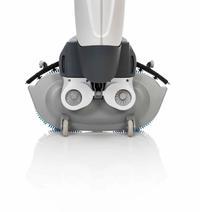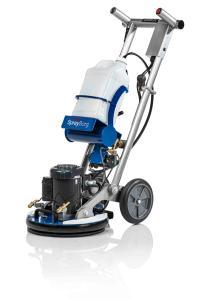You are reading: How To Clean Wood Floors
04 January 2022
3min read time
Brooke Payne
How To Clean Wood Floors
Share:

In the most general terms, there are two different types or processes for cleaning wood floors. The first and most common is what we call “Maintenance Cleaning” or light cleaning. This is a regular cleaning process (ie daily or weekly) and is designed to maintain a good level of floor hygiene and appearance. The second type of floor cleaning is referred to as “Deep Cleaning”, where you apply a more intensive process to achieve a substantial improvement in floor appearance.
Here we break down these two types of floor cleaning. We have focused on cleaning with the i-mop; however, you could apply these steps with most types of floor cleaning machines.
Maintenance cleaning: for wood floors
1. Dust mop or sweep floor to remove dust, hair and debris.
2. Use safety signage to warn passers by that cleaning is in progress and floors may be slippery.
3. Fill i-mop solution tank with water
4. If required, add chemicals (Note: Unless your floor is particularly dirty, we recommend only adding chemical every 2nd time you clean your vinyl floor. Regular cleaning with just water helps ensure you avoid soil-attracting chemical residue build-up).
4.1 Insert the appropriate i-dose pod into the i-dose chamber:
4.1.1 Bathroom floors: use i-dose E33 Washroom cleaner (Pink)\ ii. Kitchen or workshop floors: use i-dose E73 Degreaser (Green)\ iii. General areas: use i-dose E33 Sanitary Floor cleaner (Blue)
4.2 Press i-dose injector button to dispense chemical into tank.
4.3 If you do not have an i-dose tank, manually dilute chemical into i-mop tank according to chemical manufacturer's recommendations.
5. Select and attach brushes. Refer to the i-mop Accessories Guide for further information on brush options, however the recommended brushes for cleaning timber floors are the light blue soft brushes.
6. Lower the i-mop deck and turn i-mop control knob to normal cleaning mode (brush, water & vacuum) to begin cleaning the floor. Refer to our Operator Training Video for detailed Operator instructions. For maximum efficiency, cleaning in long straight lines, overlapping slightly.
7. Anytime you need to refill the solution tank, ensure you empty the recovery tank.
Want to see any of our floor scrubbers in action? Book your demo today!
Deep cleaning: wooden floors
1. Due to the porosity of timber floors we do not recommend any “deep scrubbing” where solution is left on the floor for any extended period of time.
2. Therefore the process for deep cleaning of timber is multiple repetitions of the maintenance cleaning process to bring about a rapid improvement to the flooring appearance.
Read: How to clean vinyl floors?
Check out these amazing results by the Orbot Sprayborg on wooden floors.
Products Featured Inside this Article
Media and Insights
Join the movement that's changing what clean means.
Be part of a cleaner world. Get a live demo at a time that suits you.
Book a Demo

